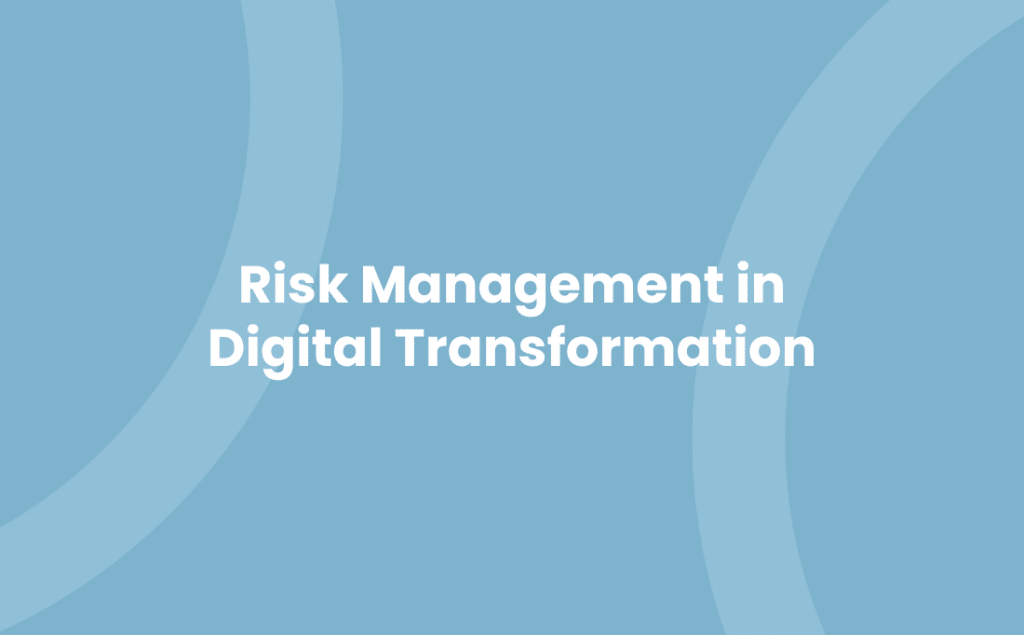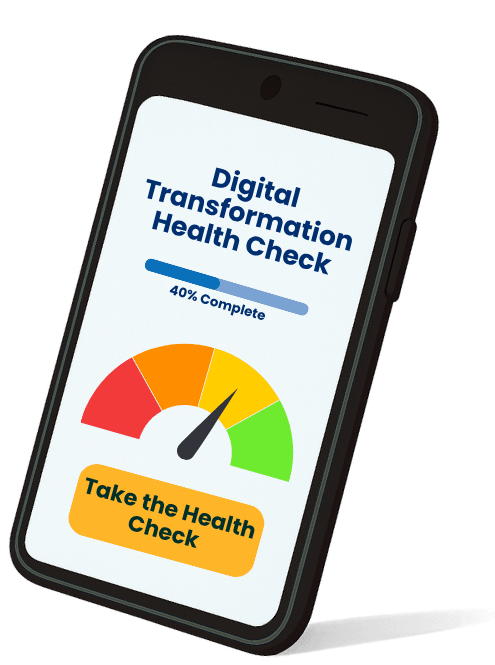In the digital age, staying ahead of the curve is key. But as you navigate this transformative journey, are you aware of the risks that come with digital transformation? It’s not just about adopting the latest technologies, but also about managing the potential pitfalls that could hamper your progress.
From data breaches to implementation failures, the risks are real and varied. But don’t fret. With a solid risk management strategy, you can confidently steer your organisation towards a digitally empowered future. This article will help you understand the nuances of managing risks in digital transformation and provide practical tips to ensure a smooth transition. So, buckle up and let’s delve into the world of digital transformation risk management.
Understanding Digital Transformation Risk Management
Taking the leap into digital transformation comes with its share of risks. As the proprietor of an SME, comprehending these risks gives you the upper hand. This section unravels the essentials of digital transformation risk management.
First, It’s crucial to know what risks are at play. Predominantly, you might face threats to data security, increased vulnerability due to new technologies or even financial losses from poor implementation. As you steer your business, it’s vital to carry along a torch of precaution, surveying the terrain ahead to avoid unnecessary mishaps.
Next, we delve into the core of these risks. At the heart, data breaches pose the largest threat. They’re sneaky, disruptive, and costly. But don’t allow this scare you – you can combat data breaches successfully through rigorous digital risk management.
When discussing financial losses, often, these result from subpar implementation of new technologies. Unsuccessful launches or ineffective adoption practices can lead to loss of both time and money. You can counteract this risk by performing smaller, incremental implementations, which are less daunting and easier to monitor.
Risk management in the digital transformation field also involves consistent scanning and adapting to an ever-changing technological scene. The landscape shifts dramatically, and you must remain agile.
You’re not alone in this journey. Many resources guide you in managing digital risks. Think of this as an essential survival kit, aiding you as you successfully navigate your organisation through the digital transformation jungle. Your comprehension enables you to fully appreciate the rewards that await at the end of this journey, while not losing sight of the pitfalls along the way.
Digital transformation risk management— mastering this aids in safely ushering your organisation into a vibrant digital age.
Exploring the Key Risks in Digital Transformation
You’re no newcomer to the idea of “digital transformation risk,” as it’s a vital consideration for your business. The journey towards digital fluency can offer numerous benefits, but it’s essential to prepare for potential pitfalls along the way.
- Data Breaches: Digital transformation equips you with valuable data, granting you exciting possibilities for streamlining operations and improving customer relationships. However, it also thrusts your business into a junction where threats pose significant risks. Cybercriminals constantly prowle the shadows, always searching for vulnerabilities in your network to exploit.
- Financial Losses: The cost of integrating digital technology into your business operations can’t be ignored. Poorly executed digital strategies can dent your budget with unnecessary expenditure, leaving your profit margins teetering in the wind.
- IT and System Failures: This risk revolves around unplanned downtime, loss of productivity or data loss due to IT and system failures. As you increase your reliance on technology, such failures can manifest as significant disruptions to your business operations.
- Regulatory Compliance Issues: In the ever-changing landscape of the digital world, laws and regulations adapt almost as quickly. Non-compliance with data handling, privacy regulations, or industry-specific guidelines can result in hefty fines and a damaged reputation.
- Resistance to Change: Amid the pomp and promise of digital technology, it’s easy to overlook the human element. Employees resistant to change can obstruct the route to successful digital transformation.
Avoiding these risks requires a sturdy “digital risk management” framework. Tackling threats head-on, bolstering security measures, allocating budget wisely, ensuring regular system maintenance, compliance checks, and fostering a positive change culture are amongst the effective strategies to mitigate these issues.
Remember, managing the risks associated with digital transformation isn’t a one-time task‚ it requires continuous vigilance. As your business evolves with technology, so should your risk management strategy. You’re not charting unknown territories; resources and guidebooks are available to smoothen your path towards successful digital transformation.
Strategies to Mitigate Digital Transformation Risks
Adopting a strategic approach in handling digital transformation risks assures benefits for your business. Here are techniques to safeguard your enterprise.
One effective measure to consider in your digital risk management is boosting cyber resilience. Make your IT systems secure by regularly incorporating updated anti-virus software. Always ensure encryption of sensitive data, signifying an active stance against potential cyber threats.
Indeed, when guiding your SME through the unchartered depths of a digital overhaul, designing a robust contingency plan makes a pivotal difference. This plan readies your business for unexpected disruptions, ensuring minimal impact on operations.
Additionally, integrating risk management in your project management framework offers a systematic way of handling digital transformation problems. This fusion allows for proper planning, testing, deployment, and monitoring of each transformation phase. Consequently, it significantly reduces the chances of abrupt failures and assures smoother transitions.
Remember that education is instrumental in mitigating risks occurred during the transformation process. It’s crucial to conduct regular training for your employees about the risks of digital transformation. This includes phishing attacks, rogue software, or unexpected system shutdowns. Guided awareness about these challenges empowers your team to create a secure digital environment.
Another winning strategy is leveraging digital risk assessment tools. These tools give foresight into potential risks and provide an overview of your business’s digital landscape. Armed with this intelligence, you’re better positioned to make informed decisions about risk mitigation.
Through all these tactics, a transparent approach arises as the backbone of successful digital transformation risk management. Conveying clear, precise facts about the digital overhaul journey assists in managing expectations and preparing the workforce for possible hitches.
Lastly, consider seeking reputable third-party support. Professionals in the digital transformation risk field offer invaluable knowledge and resources, assisting in a swift, seamless digital transition.
Innovative Solutions for Digital Transformation Risk Management
In this dynamic technological age, mitigating digital transformation risk necessitates progressive solutions. Innovative strategies can play an instrumental role in digital risk management, offering a protective shield for your business against potential threats. Let’s delve into some of these revolutionary solutions.
Implementing Advanced Analytics can be a strategic move. With real-time analytics, you’re given access to prompt, relevant data, helping you make informed decisions. The analytics offer insights into potential risk areas, enabling proactive countermeasures for potential issues, prior to their escalation into real threats.
Embracing Cloud Services also mitigates digital transformation risk. Storing and managing data on an off-site server reduces the risk of data breaches, one of the most formidable risks SMEs face in digital transformation. With the cloud, you get built-in security systems ensuring confidential information remains invulnerable.
Automated Risk Assessment tools are game-changers in dealing with digital transformation risks. They scrutinise digital processes, identify risks and provide recommendations accordingly. Automating the process reduces manual errors and gives you a thorough assessment of areas prone to risk.
Incorporate Integrated Risk Management (IRM) solutions into your operation. IRM systems offer a structured and consistent approach to identify, assess and manage digital transformation risk. Providing a comprehensive view of all business risks, it’s instrumental in risk prioritisation.
Lastly, adopting Artificial Intelligence (AI) and Machine Learning (ML). AI and ML can foresee potential risks by recognising patterns and learning from past data. A futuristic solution, it effectively delivers comprehensive risk management.
Innovation isn’t an option‚ it’s a necessity when tackling digital transformation risk. Combining traditional strategies with advanced methods such as Analytics, Cloud Services, Automated Tools, IRM systems and AI proves an astute approach to securing your business venture in the digital realm. Stay aware, stay ahead.
Case Studies on Successful Digital Transformation Risk Management
Glance at these illustrations, they perfectly exemplify successful digital transformation risk management. Recognise the strategies mentioned before? Let’s see them in action.
Barclays, the renowned financial sector behemoth embodies what robust digital risk management looks like. Their digital transition emphasised security, employing advanced analytics and AI. Enhancing their cyber resilience, Barclays managed to safeguard their online banking services against cyber risks, making them a trusted name for millions.
Netflix, the global streaming service, also provides instructive navigation through digital transformation risk. Through employing cloud services and automated risk assessment tools, Netflix successfully transformed from a DVD rental service to a digital streaming giant.
Dominos, the pizza corporation, highlights how digital transformation risk management meshes with a firm’s overall strategy. By implementing an incremental digital strategy, Domino’s safeguarded themselves from overwhelming digital shocks. The result was a successful transition to online services which catapulted them ahead of competitors.
Learn from their triumphs, in the digital realm, understanding risk management can catapult your business to success, safeguarding from potential threats. Be prepared, as in the digital transitional journey, staying one step ahead makes all the difference.
Conclusion
So, you’ve seen how giants like Barclays, Netflix, and Dominos have navigated the digital transformation landscape successfully. They’ve used strategies such as incremental implementation, advanced analytics, AI, and cloud services. Enhanced security measures and automated risk assessment tools have been their shield against potential risks. The key takeaway? It’s about integrating risk management into your project frameworks and boosting your cyber resilience. By doing so, you’re not just mitigating risks but also paving the way for successful digital transitions. Remember, effective risk management is your ticket to thrive in the digital realm. So, don’t just manage risks, master them. And you’ll find yourself leading the pack in your digital transformation journey.



